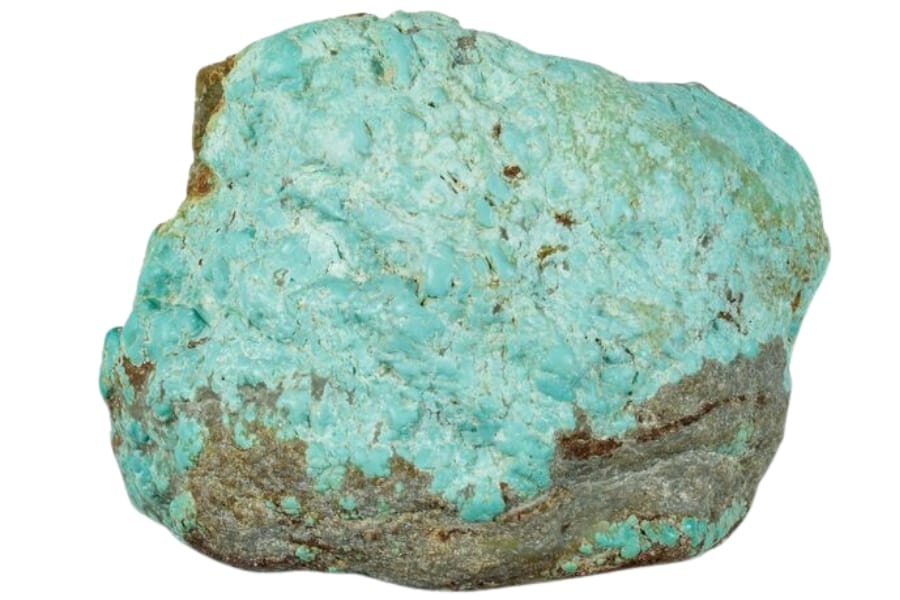Arizona gem hunters have a special place in their hearts for turquoise, a valuable stone known for its unique blue-green color. This lovely stone is more than just a piece of jewelry; it’s a piece of history deeply rooted in the culture and heritage of the state.
Native Americans have revered and used turquoise for centuries, adding it to their art and using it in ceremonies. Arizona is not only a source for this beautiful stone, but also a major cultural center.
This article will take you on an exciting tour of Arizona’s best turquoise mines and locations and show you how to find these hidden gems.
Whether you’re an experienced collector or just starting, our complete guide will give you all the information and confidence you need to start your adventure in the Grand Canyon State looking for turquoise!
What Is Arizona Turquoise Anyway?
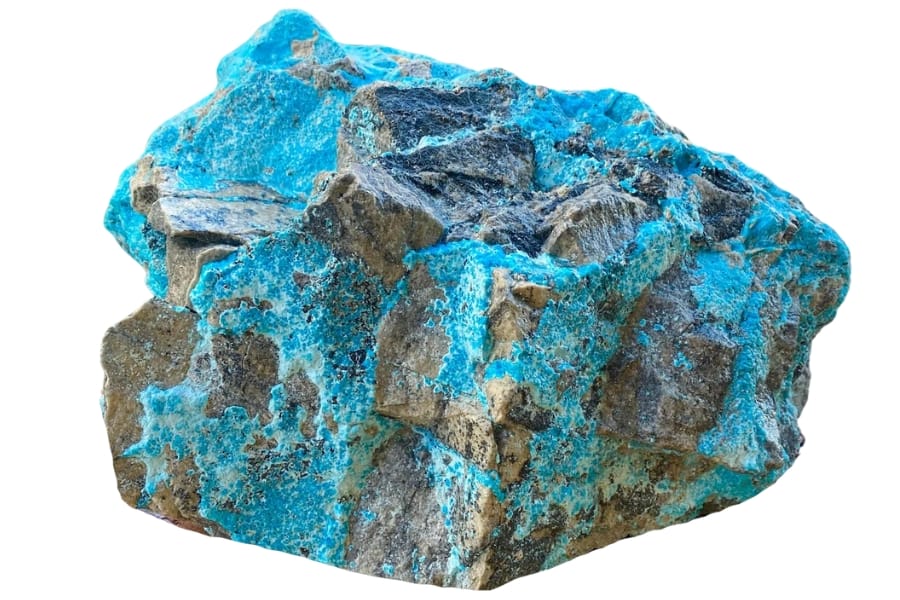
Turquoise is a beautiful, eye-catching stone that can be sky blue or green. It often has matrix veins of other materials like iron or copper. The beautiful stone you see here is not something you’d find in a jewelry store.
It’s a mineral formed over a long time deep in the earth. Copper, aluminum, and phosphorus are some chemicals that give it its unique color. The beautiful stone we call turquoise is made when these elements mix with water and slowly dry out.
Copper is what gives turquoise its bright blue color. Iron and chrome, on the other hand, can make it slightly green. To help you identify what turquoise looks like, we’ve made an article to simplify your hunt!
Most likely, these stones formed in dry areas where rain seeps through the ground and carries small amounts of minerals deep underground. Over time, these minerals include crystals and stick together, turning cracks and holes in rocks into turquoise.
Most of the world’s turquoise comes from places high in copper and with a history of volcanic activity. These places have the heat and minerals needed for turquoise to form. Sometimes, the specimen’s origin also determines how much a turquoise is worth.
The Types Of Turquoise Found In Arizona
Diving into the world of turquoise in Arizona reveals a spectrum of colors, qualities, and names that reflect the state’s diverse geology. Here are the distinct types of turquoise hidden under the state’s surface:
- Bisbee turquoise
- Kingman turquoise
- Morenci turquoise
- Sleeping Beauty turquoise
- The deep experience and understanding of our team about the area
- Recommendations from local groups and clubs
- How easy it is to get the a particular location
- Safety and potential hazards when collecting
- Weighing private and public locations
- The ability for both experienced and novice geode enthusiasts to find great samples
With these factors in mind we’ve been able to put together a fantastic list that just about anyone can use!
The Best Places To Find Turquoise in Arizona
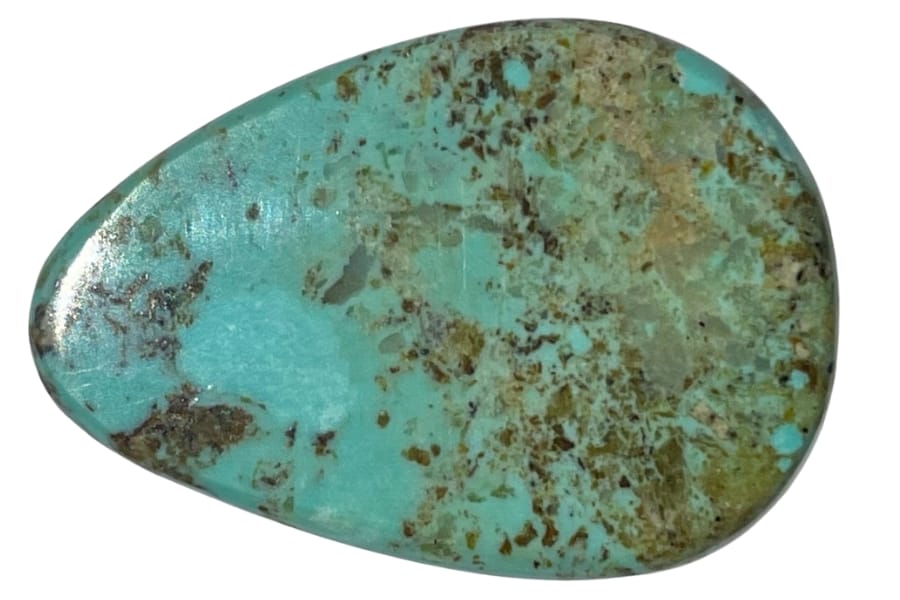
We’ll start by listing our favorite places in the state to look for turquoise. There are many excellent locations to mine for gems in Arizona, but only a few are suitable for finding turquoise specimens. Some of these places aren’t as well-known, but they often have great opportunities for searching.
Always Confirm Access and Collection Rules!
Before heading out to any of the locations on our list you need to confirm access requirements and collection rules for both public and private locations directly with the location. We haven’t personally verified every location and the access requirements and collection rules often change without notice.
Many of the locations we mention will not allow collecting but are still great places for those who love to find beautiful rocks and minerals in the wild without keeping them. We also can’t guarantee you will find anything in these locations since they are constantly changing.
Always get updated information directly from the source ahead of time to ensure responsible rockhounding. If you want even more current options it’s always a good idea to contact local rock and mineral clubs and groups
Canyon Creek
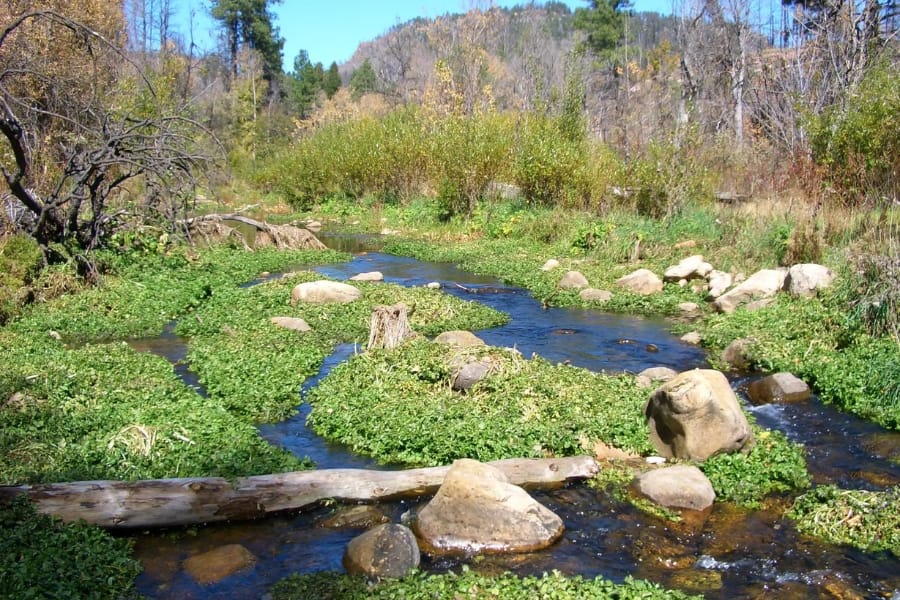
Canyon Creek, a hidden gem in Arizona, is a dream spot for adventurers and turquoise hunters.
Tucked away in the scenic region of the Tonto National Forest, this area is a haven for outdoor enthusiasts and a prime location for those on the quest for turquoise.
What makes Canyon Creek special? Well, it’s all about the unique combination of its history, geology, and the thrilling promise of discovery!
A long time ago, there were volcanoes all over the area around Canyon Creek. The ground was full of minerals, including copper, an essential part of the creation of turquoise.
That was millions of years ago, and now these same lands are full of old, dry riverbeds and rock formations perfect for hiding turquoise. As rainwater seeps through rock, it breaks down minerals like copper. Over time, this turns the cracks and spaces in the earth into turquoise.
Not many people know about Canyon Creek compared to other mining areas, which makes it feel like a secret waiting to be found!
Before you bring anything home, make sure you’ve read up on the State of Arizona’s most recent collecting regulations.
Where we found turquoise in Canyon Creek
The dry riverbeds of the creek and the rock formations around it is a good hiding spot for turquoise.
DON'T MISS OUT ON ANY GREAT FINDS!
While you're out searching for Geodes you're going to find a lot of other interesting rocks and minerals along the way. The last thing you want to do is toss out something really interesting or valuable. It can be easy to misidentify things without a little guidance.
We've put together a fantastic field guide that makes identifying 140 of the most interesting and valuable rocks and minerals you will find REALLY EASY. It's simple to use, really durable, and will allow you to identify just about any rock and mineral you come across. Make sure you bring it along on your hunt!
Cerbat Mountains
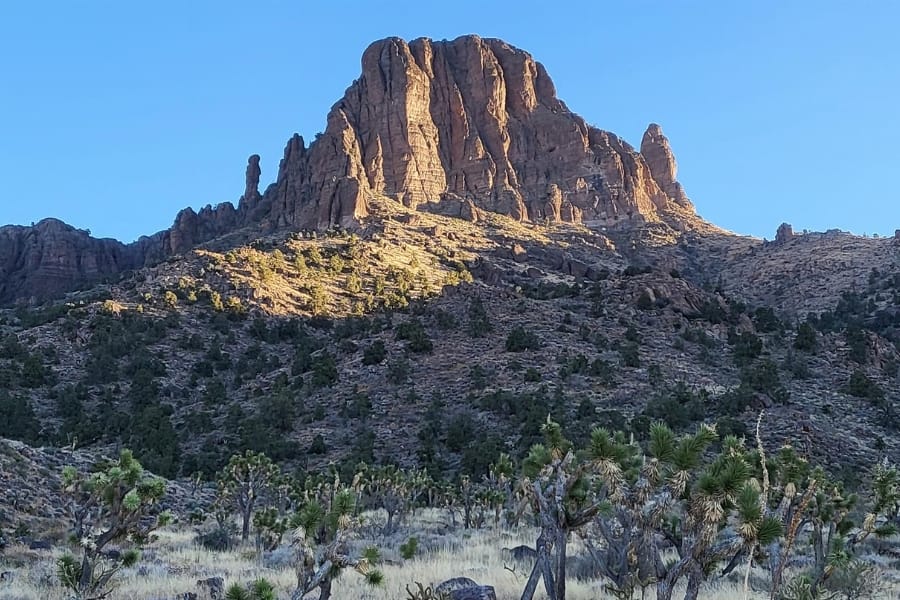
People who love rocks, especially those looking for the famous turquoise, will love the Cerbat Mountains. These mountains hold the secrets of the earth’s treasures and whisper stories of Arizona’s long mining history.
They have beautiful views and are a great place for hikers. They also have several mineral sites because volcanoes formed them, and mineral-rich fluids once flowed through them.
The turquoise here is known for its high-quality blue-green hues, which are admired worldwide.
While the actual mining is controlled and requires permission, nearby areas offer small dig-your-own opportunities for enthusiasts.
Where we found turquoise at the Cerbat Mountain
The Kingman mine, located in the Cerbat Mountain range, is one of America’s oldest and largest turquoise mines. It’s famous for producing turquoise with a delightful range of colors, often intermingled with intriguing patterns of black matrix.
Castle Dome Mountain
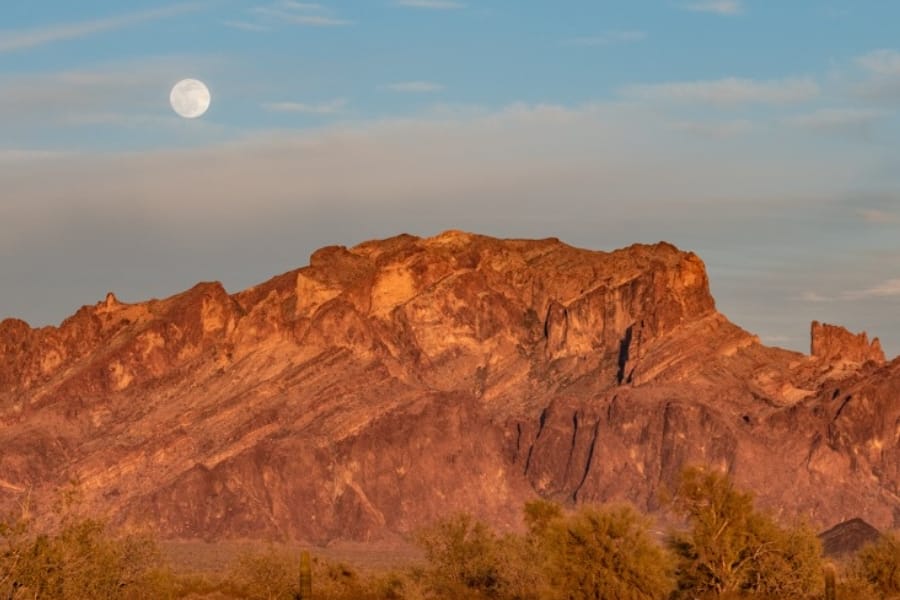
Castle Dome Mountain stands tall and proud in the state, but its rough peaks hide more than just beauty. This mountain, part of the Castle Dome Mountains range, contains minerals that make Arizona beautiful, especially turquoise.
The area, north of Yuma, is full of history, from old Native American trails to the busy mining years of the 1800s and 1900s.
This region was once a hotspot for volcanic activity. The volcanoes brought up a wealth of minerals, including copper, deep within the earth. The kind of turquoise here has an amazing range of blue colors, often mixed with grey or brown lines called a matrix.
Large-scale mining around Castle Dome is no longer as popular as it used to be, but the mountain is still a reminder of Arizona’s rich mining history.
Where we found turquoise at the Castle Dome Mountain
The area that is part of the Castle Dome District can yield several turquoise specimens and other minerals.
Sleeping Beauty Peak
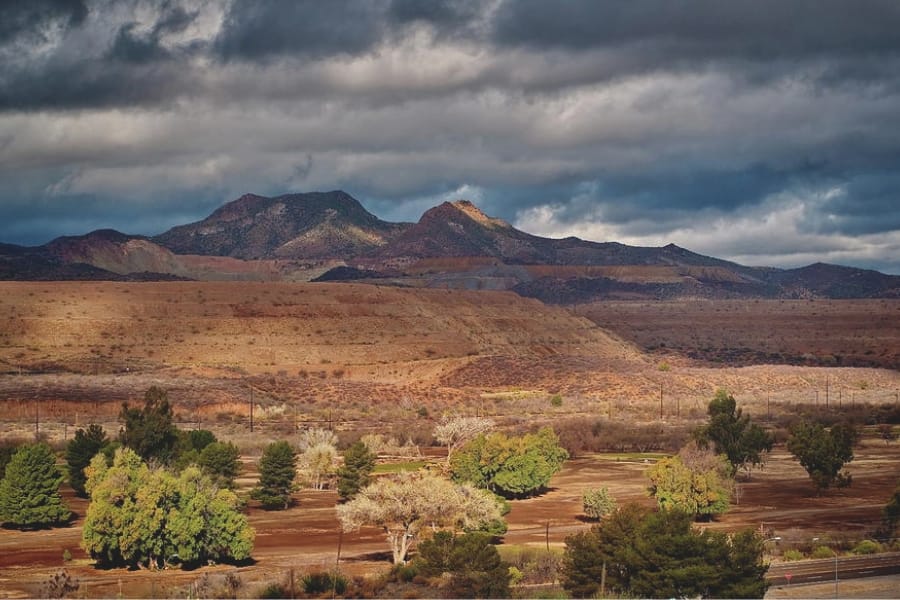
Sleeping Beauty Peak is more than just a mountain. It’s where history, magic, and geology all come together. This mountain is close to the town of Globe, and its name comes from how it looks like a sleeping woman.
It also hides a secret: it’s home to the famous Sleeping Beauty Mine, which has produced some of the most beautiful turquoise in the world. This isn’t just turquoise; the Sleeping Beauty variety is known for being solid and light blue, with no webbing or matrix, making it look like pieces of the sky!
For people who love turquoise, Sleeping Beauty Peak is a great example of how nature can create beauty over time. It is a real gem in Arizona’s landscape!
Where we found turquoise at Sleeping Beauty Peak
Most of the turquoise here came from the Sleeping Beauty Mine, near Sleeping Beauty Peak, where the place got its name. This mine had a lot of turquoise, more than any other in the United States.
Turquoise Ridge
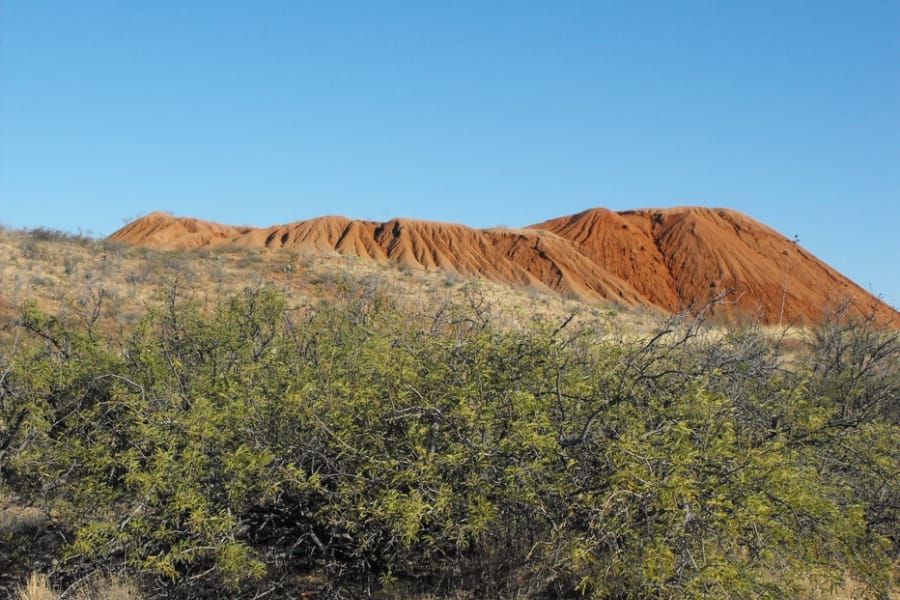
Phoenix’s Turquoise Ridge is a dream place for people who love the cool, soothing color turquoise. There’s more to this place than just its name. In real life, turquoise has been found there while people were exploring.
In Arizona’s rough and beautiful landscapes, Turquoise Ridge invites us to discover the beauty above ground and the mysteries below.
The turquoise from Turquoise Ridge is super special because of its quality and unique color, which makes it stand out in a jewelry box or a collector’s cabinet.
Turquoise Ridge is a great place to find turquoise, but remember you can’t just go there and take stones. But for people who love nature’s underground art, just learning about Turquoise Ridge’s part in the history of turquoise is exciting!
Where we found turquoise at Turquoise Ridge
Turquoise can be found in arid regions of the Turquoise Ridge, where copper-rich rocks have been exposed to rainwater and soil leaching over extended periods, leading to the formation of this semi-precious stone.
Other Great Places To Find Arizona Turquoise
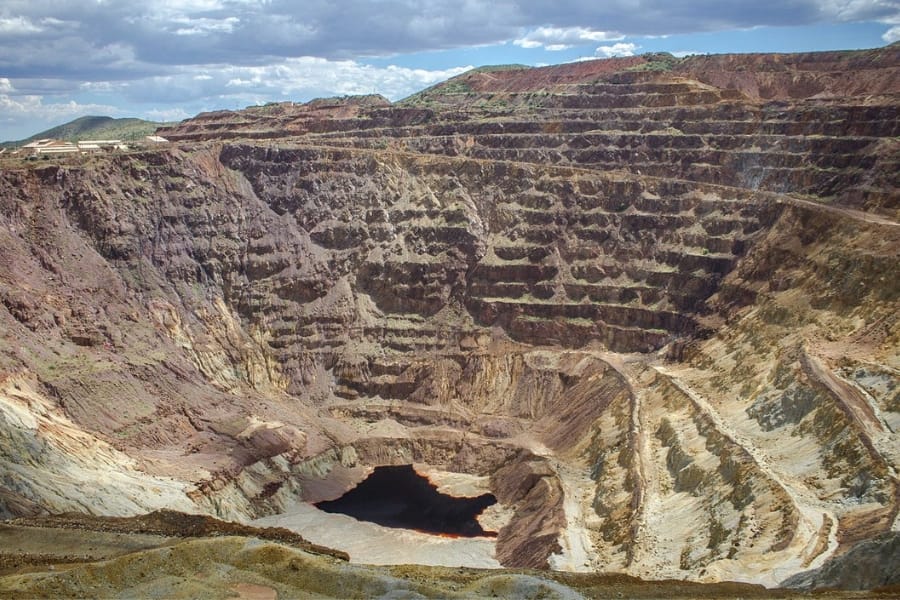
After discussing our favorites, We wanted to discuss the other places on our list. We’ll list a few more areas where we’ve been successful below, and then we’ll break down each suggestion by county.
Our recommendations by county
| County | Location |
| Cochise | Gleason-Courtland District, Turquoise Mountain |
| Cochise | Cole Mine |
| Cochise | Lavender Open Pit Mine |
| Cochise | Peace Hills |
| Gila | Miami area, south side of Porphyry Mountain |
| Graham | Greasewood Mountain |
| Mohave | Tiffany Turquoise Mine |
| Mohave | East of Mineral Park, slopes of Ithaca Peak |
| Mohave | On a small peak at the Mineral Park area |
| Mohave | Kingman area, side of the Cerbat Range |
| Pima | Little Ajo Mountains |
| Pima | Empire Mountains |
| Pima | Sierrita Mountains |
| Pima | Silver Bell Mine |
| Pima | Silver Bell Mountains |
Common Turquoise-Hunting Questions
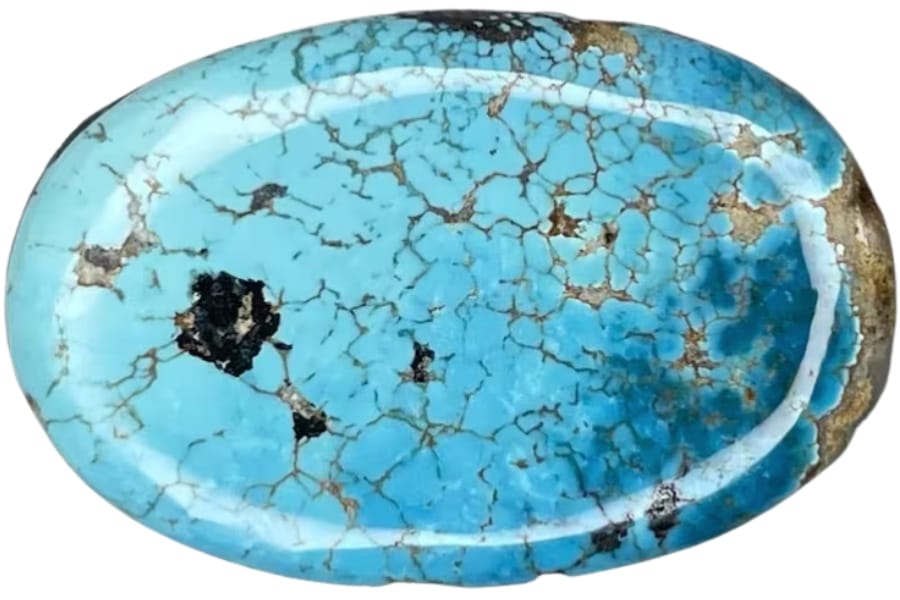
Below are some frequently asked questions about finding turquoise in Arizona that should also be answered:
Is it illegal to collect turquoise in Arizona?
In Arizona, it’s not illegal to collect turquoise or any other minerals, but there are rules and laws you must follow. It depends on who owns the land and how it’s managed in the area you want to explore.
If the land is privately owned, you need permission from the landowner. Trespassing on private property without consent is illegal. You can take home small amounts of rocks and minerals on public lands.
But the rules can differ if the land is managed by the U.S. Forest Service, the Bureau of Land Management (BLM), or another state or federal agency. Most of the time, a permit or claim is needed for commercial collection.
For example, the Kingman Mine has areas for rockhounding open to the public. For a fee, you may be able to look for turquoise. But there are strict rules that you must follow on these sites.
The Best Places To Buy Turquoise In Arizona
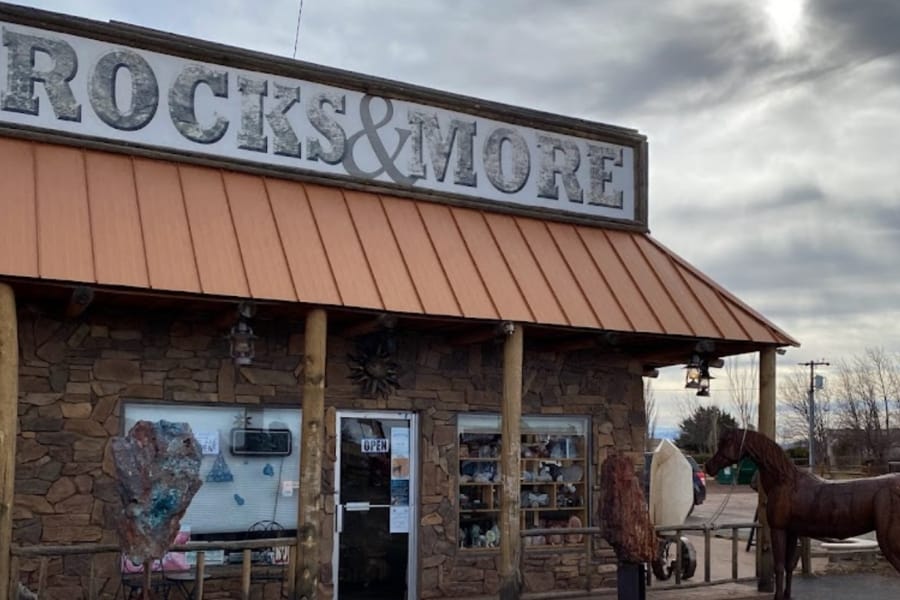
Getting turquoise in your hands will always feel great if you’re an enthusiast or collector. Some people don’t like the dirty and hard work, though. This is for you if you want to find turquoise without having to do that!
Here are some of our favorite rock shops in the area where you can find and buy turquoise of our choice:
- Black Market Minerals – 5000 S Arizona Mills Cir, Tempe, AZ 85282, United States
- Everything Just Rocks – 2235 W 1st St Unit 104-105, Tempe, AZ 85281, United States
- Miners Rock Shop – 1103 W Fairmont Dr, Tempe, AZ 85282, United States
- Natural Expressions – 13802 E Williams Field Rd, Gilbert, AZ 85295, United States
- Rocks & More – 189 South, AZ-64, Williams, AZ 86046, United States

